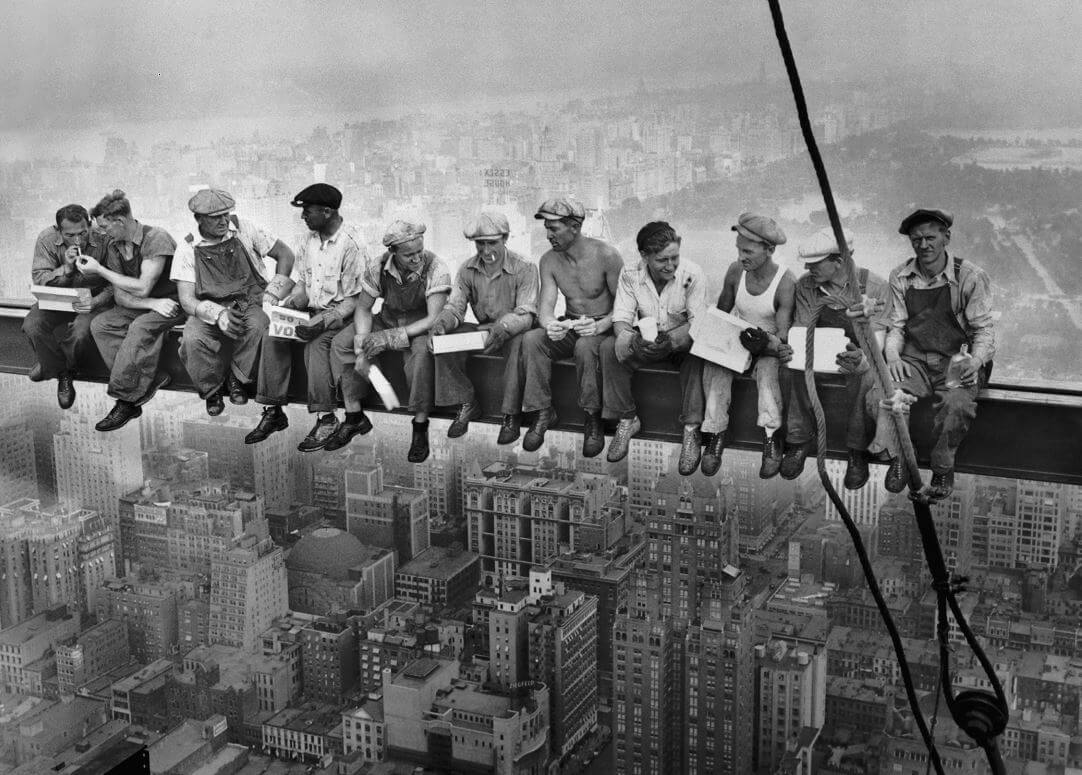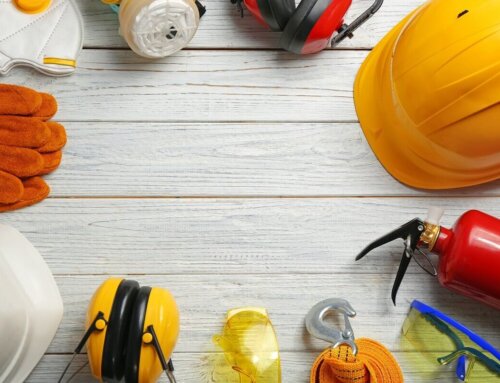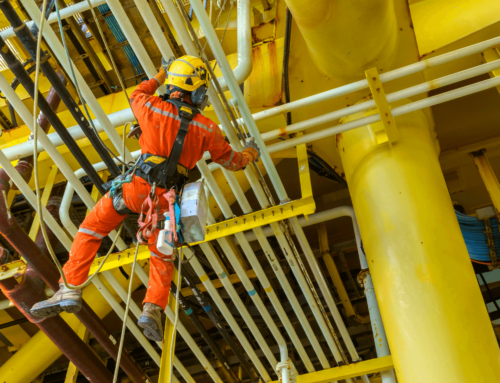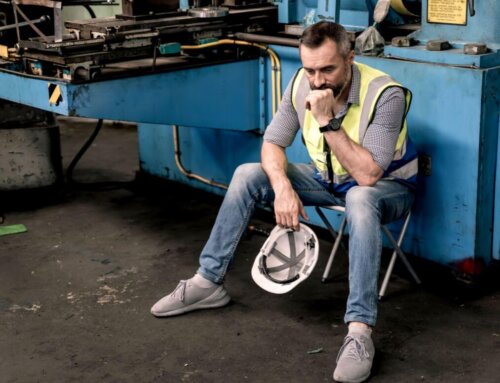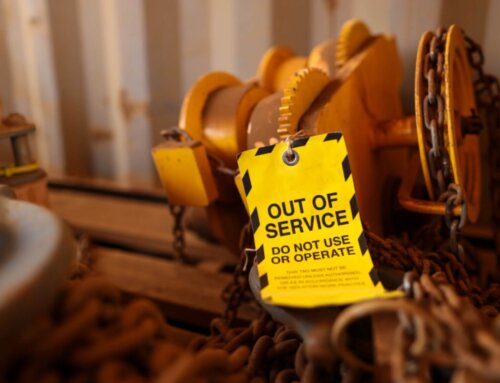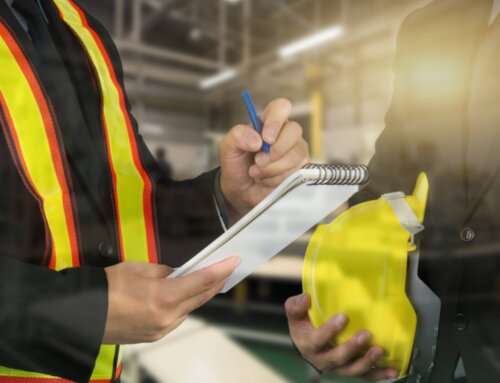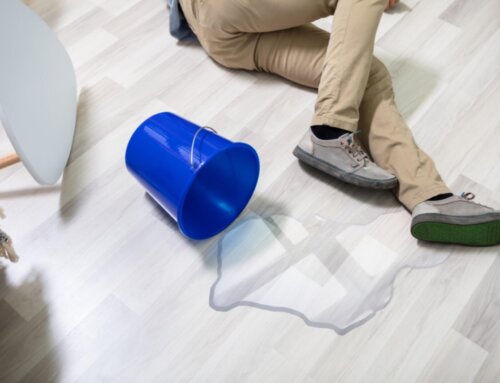There’s an iconic image that you quite often see being shared on social media. It’s a black and white photograph and it shows 11 construction workers who were part of the many who were involved in building the Rockefeller Centre in New York City, during the Great Depression.
They were photographed, casually sitting, suspended 850 feet above ground level, with no harnesses or other safety devices in view. If you are of a certain disposition, looking at the photograph alone may have the effect of turning your legs to jelly.
We mention it because when it is shared on social media, you can guarantee that there will be a comment from someone underneath it, along the lines of:
“See. They didn’t bother with health and safety in those days”
The implication hidden in our imaginary social media friend’s comment is that there are too many health and safety regulations around workplaces these days.
Well, our friend on social media might like to know that the photograph (called ‘Lunch Atop a Skyscraper’) was a staged one and that it’s rumoured that there was a perfectly safe finished floor of the new building just out of view that the men could lower themselves down onto or, if things got really bad, to break their fall!
Is there really too much health and safety regulation of construction sites or building sites?
If the answer to this question is based on the annual statistics produced by the Health and Safety Executive (HSE), then the answer to the question is a very firm ‘no’.
The latest statistics for workplace fatal injuries in the UK, reveal that the number of construction accidents where construction workers died, was twice that of the fatalities in any other industry, at 40 in total. That was a 33% increase on the previous year’s figures.
There were also 4872 non-fatal injuries to construction workers according to last figures produced by HSE.
This doesn’t suggest that the industry is over-regulated. If anything, it suggests that it isn’t regulated enough! Is that true?
What rules and regulations apply to work on a building site?
There is a wealth of legislation that governs building sites and the construction industry in general in order to protect workers, such as:
- Health and Safety at Work Act 1974
- Construction (Design and Management) Regulations 2015
- Control of Substances Hazardous to Health Regulations (COSHH) 2002
- Lifting Operations and Lifting Equipment Regulations (LOLER) 1998
- Work at Height Regulations 2005
- Provision and Use of Work Equipment Regulations (PUWER) 1998
- Management of Health and Safety at Work Regulations 1999
Coupled with other specific industry rules that apply to the various types of work undertaken on a building site, the list of regulations seems fairly extensive. Which leads us to ask the obvious question that arises from this information, again.
Why are there so many site accidents still happening on building sites?
The statistics don’t lie. Being a construction worker is one of the most dangerous jobs in the UK.
The very nature of construction sites is what makes them dangerous places to work, even with strict regulations in place. Buildings are being constructed or renovated on site. With that comes the use of large, powerful tools and machinery, construction vehicles travelling around the site, workers operating on scaffolding, and high ladders, to name but a few of the potential activities that could lead to a workplace accident taking place.
The main types of building site accident claims that personal injury solicitors are asked to deal with are caused by :
- Falls from height: from ladders or scaffolding or from the building construction itself. Falls from height are the biggest cause of fatal accidents in the workplace year on year. The risk of falls from height accidents on constructions sites is very high.
- Moving objects: these include diggers, forklifts, dumper trucks and delivery vehicles.
- Falling objects: the potential for falling objects to cause serious injury when they fall whilst work is being undertaken at height, is considerable.
- Slips, trip and fall accidents at work are very common causes of accidents at work. Tripping over an item that’s been wrongly left in a dangerous position can happen in any workplace. There is increased potential for these types of accidents to cause personal injury to a construction worker on a building site.
- Electrocution : there is a higher risk from electrocution on a building site than might at first be obvious. Electrocution caused by coming into contact with power cables on site does happen and is often one of the reasons for falls from height.
- Lifting accidents – another major cause of workplace accident claims, specifically back injury claims. Lifting gear and materials around building site is an every day all day activity and back injury injuries are very common.
- Asbestos – asbestos disease claims are usually made as a result of historic exposure to asbestos which was finally banned from use in the UK in 19995 (with blue and brown asbestos being banned in 1985). However, asbestos is still present on building sites where demolition or renovation of older properties is taking place. Work where asbestos is present is now heavily regulated.
- Hand Arm Vibration Syndrome (HAVS) – this is an occupational disease caused by use of handheld power tools on a regular basis.
Injuries from construction site accidents are often of the most severe kind possible. Already noted is the fact that the construction industry has the unwanted record for the highest numbers of fatality year on year of all industries. Many more life-changing serious injuries are caused in building site accidents.
Construction sites are inherently dangerous places to work. That might seem an obvious statement to make. Whilst we have outlined some of the ways that construction site accidents can occur, the plethora of regulation, some of which has been outlined in this article, was introduced to prevent accidents on construction sites and prevent workplace injuries.
Nevertheless, it remains that building site accident numbers are still at unacceptable levels.
Are construction companies flouting health and safety law?
A report in The Times newspaper in 2019, reported on a survey of 2,000 British building companies commissioned by a company called Safetybank. Its findings were disturbing. It found that more than two-thirds of those surveyed admitted that they would fail or at best scrape through a HSE spot check of their construction sites.
Six per cent of those who responded to the survey also admitted to inaccurately logging non-compliance with safety matters on site. The high cost of administering record-keeping was blamed by 20 per cent for their poor record keeping.
The report concluded that poor record-keeping by some construction companies was putting workers safety at risk.
Have cuts in HSE’s funding had a bad effect on safety on construction sites?
The HSE’s Business Plan for 2016/2017 showed that the funding HSE receives from local government would be £100 million less in 2019/20 than it was in 2009/2010.
This amount of a decrease in the funding of the body that oversees safety at work, including the work carried out on construction sites, can only be detrimental to the safety of construction site workers (and workers in other industries too).
The fear is that with significantly less funding, the HSE will be required to ‘cut its cloth’ accordingly. In whatever way this reduction of funding ends up manifesting itself, it’s probably fair to say that it won’t be in a good way so far as the safety of construction workers is concerned.
Are we likely to see the numbers of building site injury compensation claims rise further?
The Financial Times wrote on the 6th August that the government ‘is relying on the construction sector to drive economic recovery.’ This after, the same paper reported that UK builders had reported their strongest monthly rise in building activity in five years during July 2020. This news was even more striking because was achieved during the coronavirus pandemic.
Indeed, there was some controversy at the start of the Covid19 induced lockdown when the government were keen to ensure that construction workers carried on building whilst everyone else other than designated keyworkers was told to ‘stay home.’
With this kind of impetus being maintained if not increased in the building sector over the coming 12 months, combined with the possible watering down of effective regulation for the reasons already outlined, the prospects of improving construction site accident statistics, doesn’t overall look too rosy.
With Brexit looming too and with it the possible watering down still further of Health and Safety at work regulations, there may be further cause for concern on the horizon.
Mooneerams solicitors with offices in Cardiff and throughout South Wales are experts in accident at work compensation claims including construction site claims.
If you or someone you know has been injured in a construction site accident and would like to know if you or they are in a position to make a personal injury claim, call now on 029 2048 3615 for a free initial chat with one of our team. Alternatively, you can leave your details on this page or on our contact page and we’ll call you back.
If after discussing your situation with us, we think you have reasonable prospects of making a claim (and you’d like us to take the claim on for you) we’ll be pleased to do so. In most cases we will be able to fund your claim through a No Win No Fee agreement.

